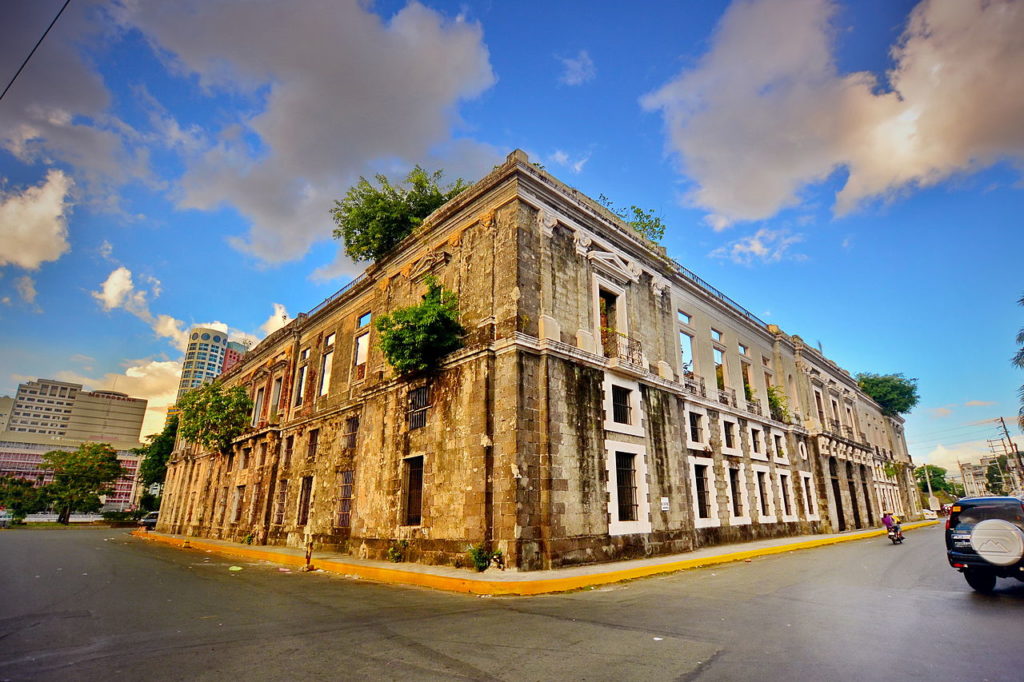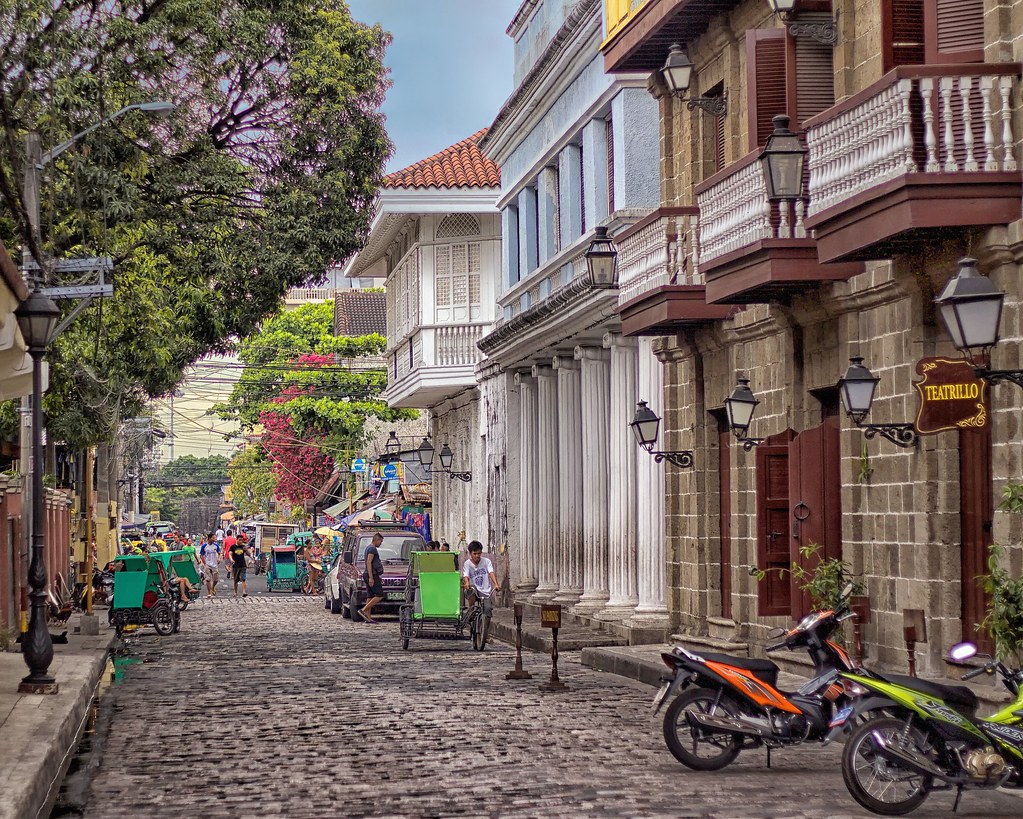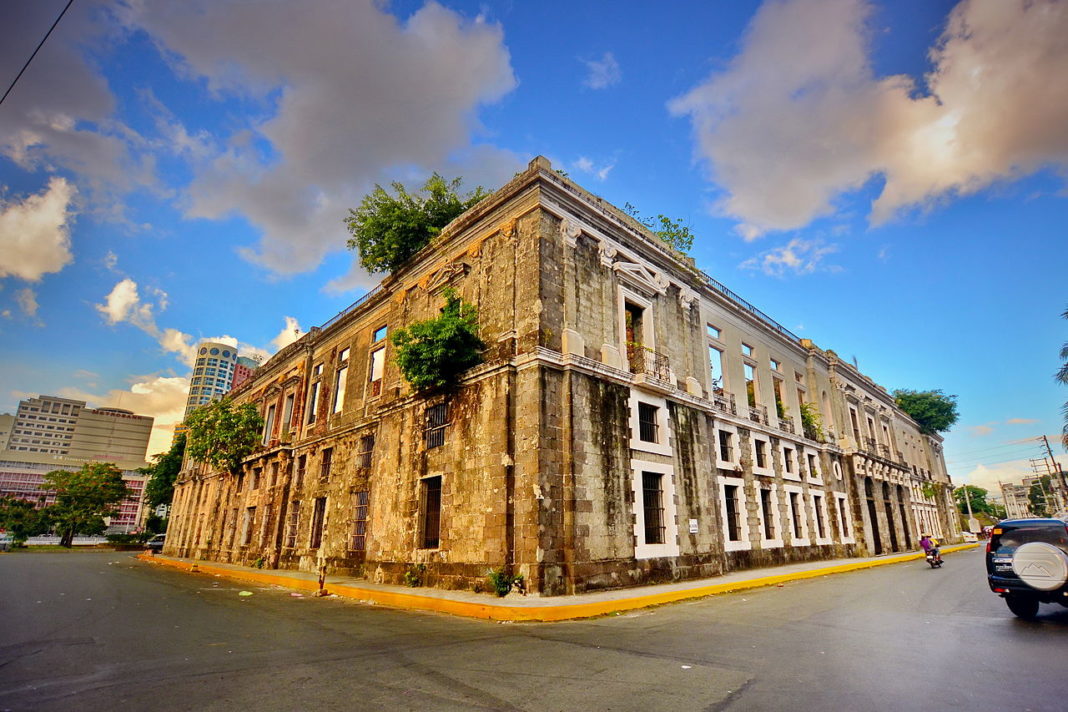Present-day Intramuros comprises a centuries-old historic district, entirely surrounded by fortifications, that was considered at the time of the Spanish Empire to be the entire City of Manila. Other towns and arrabales (suburbs) located beyond the walls that are now districts of Manila were referred to as extramuros, Latin for “outside the walls”, and were independent towns that were only incorporated into the city of Manila during the early 20th century.
 The walled city was also considered the religious and educational center of the Spanish East Indies. The original campuses of the University of Santo Tomas, the oldest university in Asia, and the Ateneo de Manila, were in Intramuros before transferring in 1927 and 1932 respectively; today the area still contains the main campuses of the University of the City of Manila, the Colegio de San Juan de Letran, Mapúa University, Philippine Nautical Training Colleges, the Colegio de Santa Rosa, and the Manila High School.
The walled city was also considered the religious and educational center of the Spanish East Indies. The original campuses of the University of Santo Tomas, the oldest university in Asia, and the Ateneo de Manila, were in Intramuros before transferring in 1927 and 1932 respectively; today the area still contains the main campuses of the University of the City of Manila, the Colegio de San Juan de Letran, Mapúa University, Philippine Nautical Training Colleges, the Colegio de Santa Rosa, and the Manila High School.
 The Battle of Manila in 1945 entirely flattened Intramuros. As the occupying Japanese Imperial Army made their last stand against the victorious efforts of Allied soldiers and Filipino guerrillas, heavy artillery bombardment destroyed its eight churches, walls, universities, houses, and government buildings constructed for centuries in Spanish colonial architecture; only the San Agustín Church, the oldest standing church in the Philippines, survived intact and was later made a UNESCO World Heritage Site. Though reconstruction efforts began immediately after the war, many of its original landmarks are still lost today; under the Intramuros Administration, Intramuros is still in the process of postwar reconstruction and revival of its cultural heritage.
The Battle of Manila in 1945 entirely flattened Intramuros. As the occupying Japanese Imperial Army made their last stand against the victorious efforts of Allied soldiers and Filipino guerrillas, heavy artillery bombardment destroyed its eight churches, walls, universities, houses, and government buildings constructed for centuries in Spanish colonial architecture; only the San Agustín Church, the oldest standing church in the Philippines, survived intact and was later made a UNESCO World Heritage Site. Though reconstruction efforts began immediately after the war, many of its original landmarks are still lost today; under the Intramuros Administration, Intramuros is still in the process of postwar reconstruction and revival of its cultural heritage.
Intramuros, including Fort Santiago, was designated a National Historical Landmark in 1951. The fortifications of Intramuros, under the name Fortifications of Manila, were declared National Cultural Treasures by the National Museum of the Philippines, owing to its historic and cultural significance. San Agustín Church, one of four UNESCO World Heritage Sites under the entry Baroque Churches of the Philippines, is located within Intramuros. Several Philippine government agencies are headquartered in Intramuros; the Bureau of the Treasury is located in the Ayuntamiento, the old municipal hall of Manila, while the Commission on Elections is housed in an office building at Plaza Roma at the site of the old governor’s palace. Several offices of the Catholic Church, including the Archdiocese of Manila and the Catholic Bishops’ Conference of the Philippines, are also found at or near Manila Cathedral.
According to Wikipedia.














